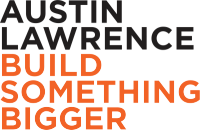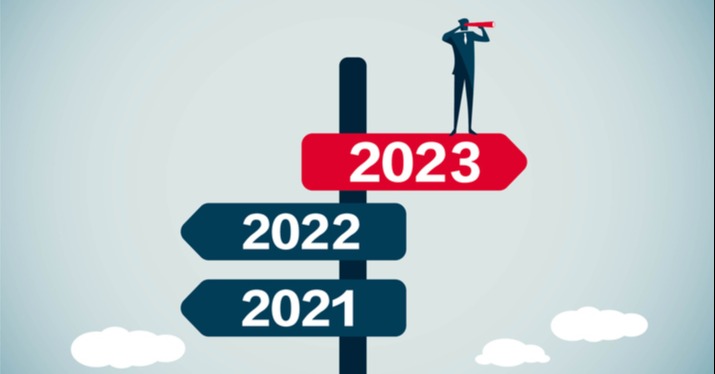It’s a dilemma that plagues B2B marketers everywhere…
…the stuff that worked yesterday isn’t working so well today.
Only five years ago, you could write a blog, load up the database with target emails, and send business development reps (BDRs) to chase down the clicks.
Today, unless it’s something your buyer really, really cares about, any outreach is going to be ignored.
It’s the same with outbound sales prospecting.
Very few decision makers answer unrecognized phone numbers, not to mention the sea of poorly written email messages that get deleted every day.
And that’s assuming your message got through their SPAM filters in the first place.
It’s no wonder why sales and marketing teams are struggling to generate enough qualified leads to hit their growth targets.
The buyer has changed the way they buy and most vendors have been slow to align with their expectations. They’ve built their organizations around the salesperson gatekeeper, and buyers won’t talk to sales until they’re ready.
If this rings true, you’ll want to check out these five critical resources that will give you a competitive advantage.
The Buyer-Seller Disconnect (A.K.A - why leads have fallen off a cliff)
1. The 2022 B2B Buying Disconnect: The Age of the Self-Serve Buyer from TrustRadius
For over five years, TrustRadius has been researching the significant shift in the way B2B buyers make purchases and how vendors are slow to adapt.
According to the report, B2B buyers spend more time researching products and services before engaging with a sales representative.
In fact, 70% of buyers are conducting independent research before contacting a vendor, and 44% of buyers prefer to buy online without ever talking to a salesperson.
Companies must focus on creating a seamless buyer journey that allows them to research and purchase products independently while still providing the support and information they need.
That includes:
- Transparent pricing on the website
- On-demand demos where they can see the product in action (without scheduling time with a sales rep)
- Case studies that allow them to apply situations to their own use case
- Testimonials and social proof (because people believe their peers WAY more than vendors. )
Understanding these changes in buyer behavior is so critical to marketing success today that we recommend every SaaS leader we work with to read the report.
If audio is more your style, check out this compelling podcast episode with TrustRadius CEO Vinay Bhagat where he discusses the results of the report in detail.
Craft a Compelling Narrative
2. The Challenger Customer by Brent Adamson, Matthew Dixon, Pat Spenner, Nick Toman
We recommend that all B2B marketing leaders read the Challenger Customer for one main reason: it helps align content with revenue.
The authors argue that marketers must challenge the status quo and offer new perspectives to earn the customer's trust and build lasting relationships.
The book provides a practical framework for identifying and engaging people within the target account that are most likely to champion change within their organization.
But most importantly, the book cautions against the common failures of thought leadership content such as being too general, failing to differentiate from competitors, or lacking practical applications.
Effective thought leadership content should challenge industry norms, provide actionable insights, and demonstrate a deep understanding of the customer's business.
To accomplish that, marketers must collaborate with subject matter experts, leverage customer data, and validate ideas through experimentation.
By following this methodology, marketers will create content that truly resonates with their target audience and effectively drives business outcomes.
Keeping AI Away From Your Job
3. "Tech-Powered Sales" by Justin Michael and Tony Hughes
Tech-Powered Sales is a comprehensive book that helps B2B sales and marketing professionals leverage the power of technology to find and develop new customer opportunities.
One of the key takeaways from the book is that technology is transforming B2B sales and marketing so rapidly that those that fail to learn and adapt will be left in the dust.
The authors argue that the future of sales is all about leveraging artificial intelligence (AI) and machine learning to analyze customer data, automate repetitive tasks, and provide personalized experiences to buyers.
The book covers topics such as social selling, AI-powered chatbots, data-driven insights, and automation tools that can help identify and close more deals in less time.
To succeed in this new landscape, sales and marketing teams need to embrace technology and continuously improve their skills to adapt to changing customer needs and stay ahead of competition.
Getting Back to Basics
4. John Carlton's "Kick-Ass Copywriting Secrets of a Marketing Rebel"
Even in the digital age, businesses still need to persuade and convince their target audience to take action, whether it's buying a product, signing up for a trial, subscribing to a newsletter, or just getting them to read your blog post.
Therefore, learning the principle of effective copywriting from direct response marketers is more important than ever, and John Carlton is at the top of our list.
His book “Kick-Ass Copywriting Secrets of a Marketing Rebel” serves as a comprehensive guide to writing persuasive and effective marketing copy, from identifying and understanding the target audience to crafting headlines, offers, and calls to action.
Carlton emphasizes the importance of using language that resonates with the reader and creates an emotional connection, as well as providing practical tips for improving the clarity, flow, and impact of the copy.
Carlton also delves into the psychology of persuasion, discussing how to overcome objections, build credibility, and create a sense of urgency.
Prospecting is Marketing
5. Combo Prospecting by Tony Hughes
Even though this book focuses on best practices in sales prospecting, marketers would benefit greatly by reading it, especially if they’ve never had to pick up the phone and try to create an opportunity.
And, let’s be honest—most salespeople suck at writing, which is why email inboxes are flooded with highly ignorable dribble.
The most successful operations are a collaboration between marketers and sellers, and they need help with strategy, targeting and message crafting that will get the prospect’s attention and move them off of their status quo.
Another aspect that we like about Hughes’ Combo Prospecting is the emphasis of being customer-centric in all B2B sales and marketing.
He stresses that successful prospecting requires a deep understanding of the customer's needs and interests, and that sales professionals must focus on building relationships with customers rather than just booking appointments or making a sale (what’s come to be known as “commission breath.”)
Staying Ahead of the Trends (and Your Competition)
Marketing is a fashion-business.
Whenever companies discover a tactic that works, everyone jumps on board until the customers get overwhelmed and learn how to ignore them.
When that happens, it’s important to remember that the underlying reasons “why” customers buy in the first place will never change–and you can use that to your benefit.
Simply developing value-added content and reducing barriers to access (like form fills) will put you way ahead of the competition.
These five resources will put you on the fast track to buyer-centric marketing and sales.
Otherwise it’s like Moore’s Law in reverse…
…it will take you double the activity to replicate last year’s results.





